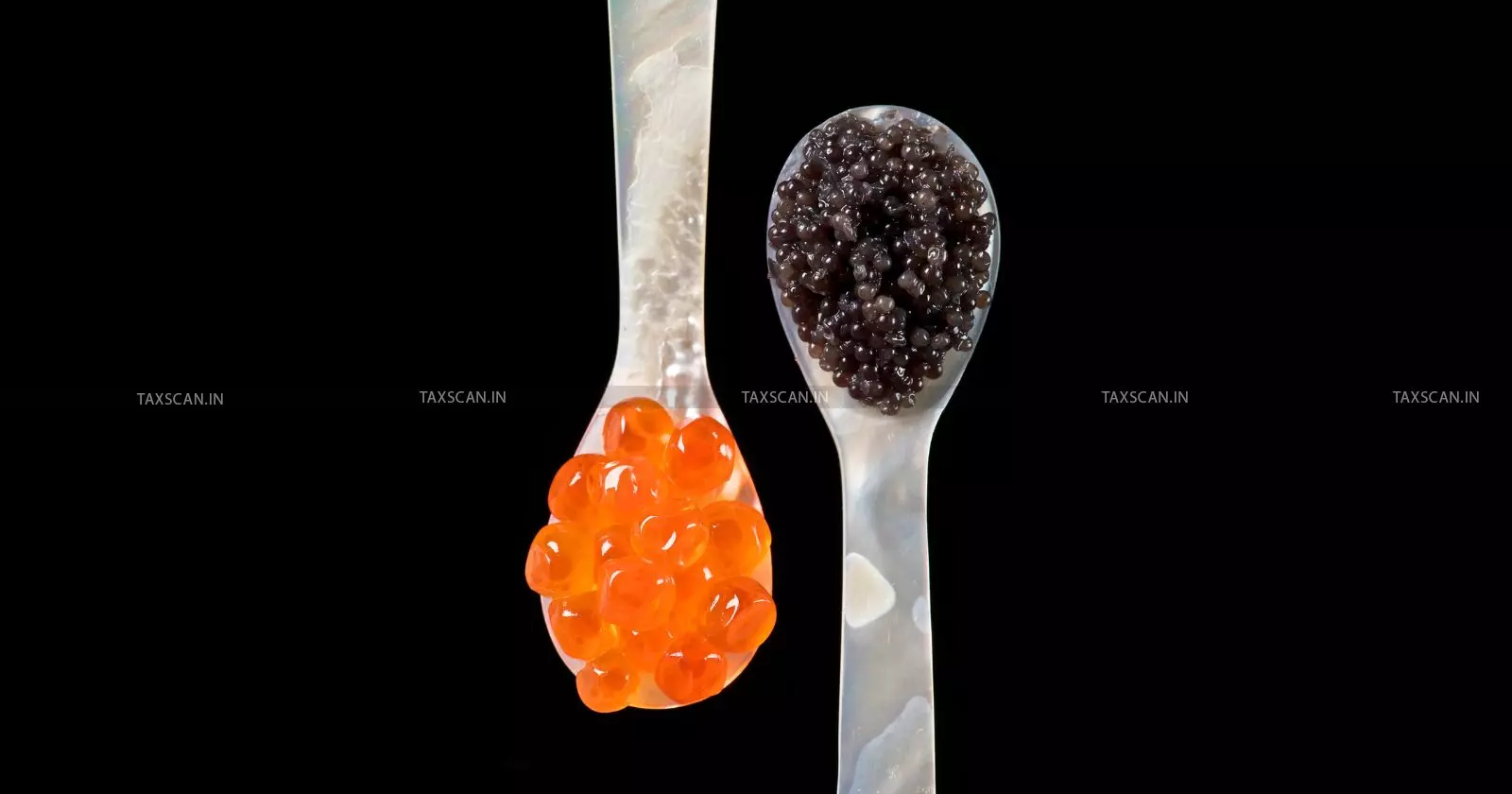Something Fishy in the New GST Rate Cuts? Luxury Delicacy Caviar gets reduced GST from 12% to 5%
Something Fishy in GST Rate Cuts? Caviar moves from 12% to 5% Slab

The Goods and Services Tax (GST) Council has stirred debate by lowering the tax rate on caviar, a symbol of luxury dining. As per the updated GST rate schedule effective September 22, items falling under HSN code 1604, which include caviar and fish egg substitutes, will now attract a reduced GST rate of 5% instead of the earlier 12% GST.
Caviar’s Luxe Tag
Caviar has never been a staple item. It epitomizes wealth and exclusivity, with small tins often sold for thousands of rupees. On Indian e-commerce platforms, salmon roe is listed at around ₹3,400, while premium Beluga caviar crosses ₹2.4 lakh. Such pricing clearly positions it as a product for the elite, not the everyday consumer.Despite this, caviar will now be taxed at the same rate as grains, vegetables, and milk-based essentials. This move raises doubts about whether the Council’s tax rationalization is aligned with its broader objective of easing costs for the masses.
Revised Classification
Under Chapter 16 of the tariff, HSN code 1604 covers “Prepared or preserved fish; caviar and caviar substitutes prepared from fish eggs.” The old rate of 12% is set to be replaced by 5%, cutting the burden for importers, luxury hotels, and gourmet restaurants.Priorities in Question
The Council has often spoken of easing inflationary pressure on households. Yet essential goods and medical supplies remain in higher brackets, while caviar, consumed by a fraction of the population now enjoys relief. Critics argue this signals misplaced priorities, benefiting elite consumers and the hospitality sector instead of middle-class families already struggling with rising food and fuel prices.GST on Real Estate & Works Contracts – Your Ultimate Guide to GST in the Real Estate Sector!, Click Here
Economic Arguments
Lowering taxes on such imports may curb smuggling, boost formal trade, and improve customs compliance. Higher reported volumes could, in theory, lead to greater overall tax collection despite the lower rate. Still, the optics remain questionable, as a reduction for an ultra-luxury product during inflationary times can appear tone-deaf.Impact on Luxury Dining
Five-star hotels and fine-dining establishments stand to gain the most. For high-net-worth individuals, a tin of Beluga caviar priced at ₹2,43,423 will now carry a 5% tax (₹12,171) instead of 12% (₹29,210), saving nearly ₹17,000. The reduction is significant in absolute terms but irrelevant to average citizens.Politics and Perception
GST decisions often trigger political blame games. Increases on essentials are brushed off as “Council consensus,” but cuts on luxury goods are showcased as government achievements. This inconsistency risks undermining credibility.India’s GST framework traditionally distinguishes between essentials (nil or 5%) and luxuries (18–28%). Reclassifying caviar into the 5% slab blurs this distinction, potentially opening the door for other luxury products to seek similar treatment.
The Council may defend the move as a rationalization exercise, but the optics suggest otherwise. While importers and luxury hotels welcome the relief, the public narrative may focus on whether India’s tax system is drifting from its stated principle of equity.
Support our journalism by subscribing to Taxscan premium. Follow us on Telegram for quick updates


